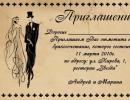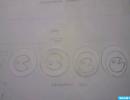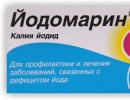Creative workshop in kindergarten. Organization of a pedagogical workshop on the problem of children's play in dhows. Creative activities in kindergarten: making soft toys
Olga (Norysheva) Osochenko
Workshop as a form of working with children
In my report I would like to highlight this form of working with children, How workshop.
Using this statement, I would like to emphasize the importance of developing creative activity in children, as a factor in the overall personal development and growth.
The essence of the modern personality-oriented process preschool education consists in the process of a child’s accumulation of such specific subjective experience, which contains means and ways of interacting with the world and, thanks to this, expands the child’s opportunities to actively and creatively participate in this interaction and, moreover, encourages him to acquire his own experience.
Creativity in the broad sense of the word is an activity aimed at obtaining something new and unique. Therefore, the main indicator of creativity is the novelty of the created product.
The result of children's creative activity, as a rule, is not distinguished by objective novelty that is significant for science, culture or production. However, the products of children's activities are new to themselves and play a huge role for the development of the child.
The basis of any creativity is imagination. The preschool age of a child is characterized by activation of the functions of imagination. And if the imagination is not specifically developed during this period, then rapid decline activity of this function. Along with a decrease in the ability to fantasize, a person’s ability to think creatively decreases.
However, fantasy should contribute to a better knowledge of the world, self-discovery and self-improvement of the individual, and not develop into passive daydreaming.
Domestic psychologists have identified indicators with the help of which children’s creativity is “recognized.”
What determines the novelty of creative solutions?
The novelty of creative solutions is facilitated by a broad orientation in the material before the presentation of any tasks, organized by an adult as an independent children's experimentation, acquiring educational character, And formation generalized methods of activity encourages children to “embed” previously assigned methods into new semantic contexts. And this, in turn, leads to the generation of both new methods, new images and new meanings based on cognitive and emotional experience.
What does children's creative activity contribute to?
She contributes formation universal ability to build any activity that is significant for a child, be it visual, speech, play, etc., as a means of creating integrity (drawing, text, plot) from different units, but using the same techniques.
"Creative workshops» - one of the modern forms educational activities, which is very attractive to children. Children love everything bright and unusual; they like to sculpt, draw, cut, stick, experiment, and design. And where else can a child realize his plans, if not in « workshop» ? There is everything here to create. "Creative workshop» - this is one of the new ones forms directly educational, joint and independent activities of children.
Creative workshops can be used in various areas of activity children: for example, theatrical workshops, in which children can create their own costumes and attributes for performances, can be used to develop children’s communicative, aesthetic, and artistic abilities. Workshops on the development of communication skills using problem situations and reading fiction can be used in speech development activities. Artistic workshops give children the opportunity to independently choose materials, direction and technique for making a craft or drawing. Workshops good deeds will help organize book repair work, toys, labor education, for example, helping a junior teacher. Local history workshop will help introduce children to the sights hometown, teach you to value your small homeland and be a patriot. Cognitive workshops have the ability to create layouts and diagrams that will help assimilate children of natural knowledge, such as the basics of mathematics, chemistry, learn about the world around us, its structure and patterns. So using workshop, How forms of working with children possible in a wide variety of activities, a significant advantage is forms of work is voluntary work in the workshop, in children’s ability to be independent, to make choices, to develop empathy and the ability to build joint activities with peers.
The work is being built in stages, where each stage conditionally corresponds to an age period, starting from middle group. Inside the stages work is carried out cyclically: “Working with paper”, “Job With natural material”, “Working with threads and fabric". The mastered content of one cycle is integrated into other cycles.
When planning the material, the principle of concentricity is observed, i.e. at each stage the content increases and becomes more complex.
For example: if in middle age at work with natural material (stones) children just look at and color them in different colors, then in senior group they are already decorating the pebbles, and in preparatory groups They are not brought to life with the help of details.
Classes in « workshop» help form children have the basic skills and abilities provided for program: ability to hold a pencil, use a brush, scissors; pick up paints, etc. and contributes to the implementation of tasks provided for in the educational field "Artistic and aesthetic development".
Creativity has a special role, which is important at all stages of activity workshop. The incentive for associative thinking plays an important role. Associations in workshop used for updating personal experience participants, develop work imagination and thereby contribute to the development of the creative process of everyone’s activity. Job with associations can be used in any form workshop: this is one of the main technological methods of individualization work even with a large number of participants.
Peculiarity « workshop» the fact that the children themselves decide whether to participate today or not. Creativity cannot exist under pressure and violence. It should be free, bright and unique. Without parting with pencils felt-tip pens, paints, the child, imperceptibly for himself, learns to observe, compare, think, and fantasize. Materials for joint activities in workshop form may be the most diverse: paint, paper, scissors, glue, colored pencils, felt-tip pens, different types paper, brushes of different sizes and purposes, napkins, "junk" material: candy wrappers, threads, all kinds of scraps for cutting and gluing
The creative process is a real miracle. This is confirmed by observations of how children reveal their unique abilities and the joy that creation gives them. Here they begin to feel the benefits of creativity and believe that mistakes are just steps towards achieving a goal, and not an obstacle, both in creativity and in all aspects of their lives. Children are better inspire: “In creativity there is no right way, there is no wrong way, there is only your own way.”
When preparing the presentation we used development such famous scientists as Maya Ivanovna Lisina, Alexander Grigorievich Asmolov, August Solomonovich Belkin, as well as materials developments modern teachers, published by them on these sites.
I have always been interested in the topic of development creativity children. Why does someone grow up to be a creatively developed person, bursting with creativity, while others...
Of course, we all come from childhood and the answer to this question must be sought in kindergarten. The development of artistic creativity in preschoolers contains great potential for the comprehensive development of the child. However, these opportunities can only be realized when children feel joy and satisfaction from what they have created, if the creative process puts them in a good mood.
Theatrical performance is a powerful source of emotions, feelings and mood; develops in children imagination, ease and joy of communication with each other and others.
Thus, the most effective way to develop the creative abilities of preschoolers is the integration of theatrical, gaming, visual arts and a well-built educational environment.
In the process of creating a developing subject-spatial environment to reveal creative abilities and develop the theatrical culture of children, we opened the creative workshop “Young Apprentices”. Children, parents and kindergarten staff took part in the creative workshops. A creative workshop is a model of a child’s interaction with others, the acquisition of social experience through creative activity.
The purpose of work in a creative workshop is to preserve the child’s creativity, to assist in the realization of his capabilities and desires, to promote the development of independence and creative initiative.
Features of a creative workshop as a form of working with children:
Improvisational nature of the activity.
The gaming style of behavior of all participants, including the teacher.
Partnership relationship between teacher and child.
Inability to plan in detail and build perspectives.
Organization and stimulation of improvisational creative activity of the child.
Discovery of a new meaning in the learning process - the child teaches himself, relying on his creative potential.
Fast and effective way acquiring skills and abilities, a method of learning invisible to the child himself.
The child realizes his interests through his own initiative.
An atmosphere of psychological freedom and safety, reasonable permissiveness, play, spontaneity. Even the most shy child finds an opportunity to express himself, to show his individuality.
The absence of templates means the child feels like a creator. He enjoys the fact that he can realize himself in creative activity; that the boundaries of what is permitted are expanding.
The teacher needs to be able to:
Do not interfere with the child’s creativity;
To be with him in this process;
Accept and understand his position;
Trust the child in moments of creative search, since he (the child) himself feels and knows what he needs;
Be a creator yourself;
Treat the results of children's creative work with care.
I started working in the creative workshop by introducing children to the history of the theater, the process of making attributes and the professions that make it exist. fairy world theater The children were presented with presentations and photo albums about the work of masters “Making Dolls”, “Different Masks”, “The World of Decorations”. After getting acquainted with the work of specialists, I invited the children to make decorations for a tabletop theater: houses, trees, bushes, clouds, the sun. With the help of our parents, we decorated the screen. How graphic designers drew posters for performances. Did invitation cards to performances. In their work, children showed creativity, fantasy, and imagination.
Now in the “Young Apprentices” workshop we make scenery, maquettes, different types of theaters: from cones, from cups, on sticks, from origami, on disks, from kinder surprises; masks for games, fairy-tale characters.
This year the creative workshop produced:
Layout of an apartment with furniture. Parents were given homework to make models of different furniture over the weekend with their child. In the workshop, we made a model of an apartment with rooms from a large box. We made a wonderful game “Housewarming Party”.
The applied arts model was made for the Russian folk tale “Morozko”. My parents made a stand and a house for Baba Yaga. The children sculpted the fairy tale characters from plasticine and decorated the entire layout with cotton wool and waste material. Children really enjoy playing with the layout; they periodically add other characters and play out other fairy tales.
Road safety layout. On theme week“My Village”, each parent and their child made a model of their home. In the road safety corner, we designed and glued a road with markings out of colored paper, placed mock-ups of houses and installed road signs.
To the day preschool worker added a model of a kindergarten made from a box, decorated our walking area from waste material, plasticine, colored paper.
Together with their parents, they took part in the “Theater Stages” kindergarten competition by making a shadow theater and attributes for it. The screen turned out to be multifunctional; if you remove the white screen that is attached to the linden trees and leave only the curtain, you can play in other theaters.
The work in the workshop is structured in such a way that children gain experience in communication, activities with each other and with adults, interaction in pairs, subgroups, groups, teams, so that everyone is interested and comfortable.
This form of work covers such educational areas Federal State Educational Standard for Education, as: social-communicative, cognitive speech and artistic-aesthetic development.
In the process of creative activity: invention, production and direct theatricalization, the assimilation of norms and values accepted in society, including moral and moral values, occurs; the formation of independence, purposefulness and self-regulation of one’s own actions; development of social and emotional intelligence, emotional responsiveness, empathy, formation positive attitudes To various types labor and creativity; formation of the foundations of safe behavior in everyday life, society, and nature.
At first, this form was used spontaneously, at the request of children or out of necessity. To date, we have created a long-term planning of classes in a creative workshop in accordance with the educational program, thematic planning organization and age characteristics of children. Planning is exemplary since the wishes of children and parents are taken into account during the educational process. In the future I plan to write a program for additional education
Parents' workshop!
A parent workshop is one of the types of group interaction with parents of pupils.
Relevance: The master class is held to strengthen the emotionally positive relationship between children and parents in the process of making crafts.
The theme of our parent workshop is “Sun”; the choice of theme was associated with the onset of spring. Usually making various crafts with their own hands took place at each student’s home. This time I decided to gather parents and children in our playroom and make crafts in kindergarten.
Target:
Involving parents and children in joint creative activities to make “Sun” crafts.
Tasks:
1. To form in children love and respect for parents and teachers, through joint activities, harmonious parent-child relationships;
2. Make a craft “Sun”;
3. Organize a joint exhibition “Sun”.
Venue: group room.
Type of activity: creative, developing.
Duration: 30 – 50 min
Participants: children, parents, group teacher.
Equipment and materials:
colored paper, cardboard, rulers, pencils, scissors, PVA glue, glue stick, box lids, peas;
Preliminary work:
- prepare a colorful invitation for parents indicating the theme of the exhibition;
Examples of works “Sun”;
- selection and reading of poems, riddles;
Progress of the event:
(In the group room there are chairs, tables on which the material used in the work lies, examples of the creation of works).
Educator:
- Good evening, dear parents! To begin with, I would like to ask our children a riddle.
Let's see if they can figure it out
You warm the whole world
And you don’t know fatigue
Smiling at the window
And everyone calls you...
The children answer Sunny.
Educator:- Well done right.
Now spring has already come into full force outside and the sun is warming up very brightly outside. Therefore, I decided to gather you in a group and make the “Sun” craft with my own hands.
And before that, I want to take you to the second floor of our kindergarten and show you an exhibition of works about space that older children did. Pay attention to the variety of works performed.
After everyone has returned to the group, children and parents sit on chairs.
Educator:
- Let's try to make a bright, beautiful, warm sun with our own hands. Moreover, this craft requires very few materials and a little imagination, but the result is more than interesting.
Making our sun is quite simple, and the children will help you and me in this exciting activity. Even very young children can take part in making crafts with their own hands.
If you are at a loss about what to do, then in front of you are examples of how to make a sun. Let's get started, don't forget that children are also involved in creating crafts, actively involve them.





Since our children do not yet know how to sit still for a long time, due to their age, they ran away from their parents after 10 minutes. I prepared an exciting activity for them. Before that, showing the example of the sun

which we can do with them. We made a cute sun with them using finger paints.
That's all, we have such wonderful Suns! You see how beautiful it is, and there is nothing complicated at all in making this craft. Such wonderful suns can be an idea for a colorful exhibition. Since not many parents came, we offered the rest to make suns at home and we will complement our exhibition with their crafts.




With the help of joint crafts from simple materials you can instill in your child a love of artistic creativity, which also contributes to the development of fine motor skills.
Sunshine, sunshine,
Look out the window;
Kids love you
Little fidgets.
Thank you very much for coming! We will be glad to see everyone at our next meeting.
Marina Demur
IN kindergarten No. 4"Pearl" was created creative workshop. IN creative workshop There is a fine arts club called “Colored Palms”. Twice a week I teach classes for middle, high and high school children. preparatory age. I decided to use non-traditional methods of visual activity in my work. Children are very surprised by the use of their palms and fingers to draw stamps and stencils. The unconventional organization of visual activities delights and surprises, causing a desire to do interesting things.
The purpose of my work is creative workshop is preservation in the child creativity, providing assistance in realizing his capabilities, promoting the development of independence and creative initiative. The work is built in stages, where each stage roughly corresponds to an age period.

Unconventional drawing reveals creative possibilities of children, allows you to feel the colors, their character and mood. It develops fine motor skills fingers, concentration, prepares the hand for writing. In development creative Parents are actively involved in determining the abilities of their children.

I suggest that together with their children they draw or make a craft on a certain topic, this helps unite the child with their parents. And it’s not at all scary if your little artist gets dirty, the main thing is that he gets pleasure from interacting with paints and is happy with his results.






Publications on the topic:
Consultation for educators “Creative teacher’s workshop” The lesson is the main part educational process, in which it is concentrated educational activities teacher and student. Preparing students c.
Creative workshop “WATERCOLOR” Autumn is a surprisingly tempting time for creativity and inspiration, and the collection autumn leaves on a fine autumn day.
Which one New Year no gifts? They are pleasant to receive and even more pleasant to give. Children especially love gifts. And beautiful packaging.
Target. Involve parents in working together in a group. Objectives: To expand interest and love for native nature and its beauty. Consolidate knowledge.
The purpose of work in a creative workshop is to preserve the child’s creativity, to provide assistance in realizing his capabilities, to promote.
Creative workshop with parents “Gift for Family Day” Goals: 1 to make parents active participants in the pedagogical process, providing them with assistance in realizing responsibility for education and.
In MBDOU Kindergarten No. 169 in Cheboksary there is the only children's culinary workshop in the republic. Here children undergo a full “young chef” course: from counting how much to weigh in grams to cooking delicious dishes, which even parents come to taste.
The cooking room is a surprisingly homely space: bright, clean, with good furniture and beautiful French dishes. Such a room is a school of good manners and eating etiquette. Here you will find everything you need to prepare any dish: an electric mixer, a food processor, a pancake maker, a miracle oven and much more.
There is also a wonderful buffet in the culinary room. There is always a lot of tasty, interesting and fun stuff on it. A buffet is not only another form of catering, but also another culture that children will encounter in life.
The room also has an original bar counter, which creates a special coziness; here you can simply play in a cafe and actually drink juice, compote or milk. With great pleasure, children try delicious and healthy herbal teas, and at the same time get acquainted with the plants from which they are prepared.

A visit to the culinary room is included in the schedule of organized educational activities. The first thing children learn is safety precautions for handling electrical appliances, cutting objects, and table setting rules. Then comes the turn of preparing sandwiches, salads, pancakes.
Cooking classes in kindergarten include play and exploration activities, creative tasks, reading fiction, practical exercises.
In the process of studying, preschoolers learn the ways of working of an adult and transfer them to their own activities. Children penetrate into the world of adult affairs, learn the secrets of labor processes and are surprised by the results obtained. In these classes, using the example of a cook’s activities, the essence of human labor is revealed (skill, hard work, desire to benefit people). Special attention is given to the joint activities of children and adults; it is precisely this kind of activity that helps preschool children look at their mother and grandmother as skillful and hardworking people, brings children and adults closer together, and promotes mutual understanding.


Classes to introduce children to the secrets of the kitchen are intended for children of the middle, senior and preparatory groups. Classes are conducted by the teacher in subgroups, in game form, with the involvement fairy-tale heroes, for example, the brownie Kuzi. An interesting plot has been developed for each lesson. In specific practical activities, children acquire the position of a creator, they develop practical skills (for example: cutting in different ways vegetables and fruits, knead and roll out the dough, use a grater, etc.).
Parents are happy to come to the Svetlyachok cafe and share their culinary secrets. Holidays and birthdays are held in the culinary room with the participation of parents.
The head of the kindergarten, Frolova Valentina Nikolaevna, says:
“This year, significant attention is paid to vocational education and within the framework of the republican conference of educators of the Chuvash Republic, the project “Encyclopedia of Professions from A to Z” was launched and we are pleased to be involved in this project. A creative group of teachers at our preschool institution is developing new projects. On at the moment in our preschool institution Work is being carried out within the framework of the existing project “Children as Cooks”, during which master classes are held among both teachers and parents and children get acquainted with the professions of a cook, pastry chef, culinary specialist and learn the basics of cooking.
For many years, our preschool has had a room where children practice cooking. This room has created an atmosphere that allows all participants in the educational process to enjoy cooking: students, teachers, parents. There is everything you need from boards, rolling pins to electrical appliances, an electric stove and a refrigerator, which allows you to prepare healthy food in a double boiler or bake delicious pancakes on a pancake maker.
Children gain experience in cooking under the strict guidance of adults, fully realizing their capabilities and the process itself is much more important than the end result; children learn to mix ingredients, calculate the number of servings, prepare enough food to enjoy themselves and treat others.
Parents really like that their child learns the basics of cooking already at preschool age and upon entering school, he has experience in making a sandwich, salad, baking cookies, preparing various desserts. And what is very important is not only to prepare food for yourself, but also to please your loved ones by preparing treats for them.”

We thank the head of MBDOU “Kindergarten No. 169”, Cheboksary, Valentina Nikolaevna Frolova for the material provided.






